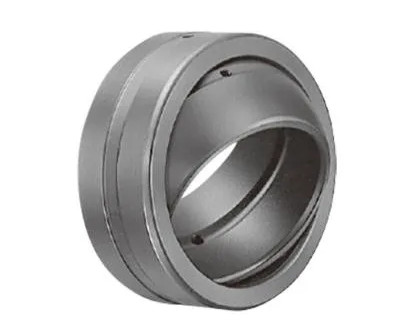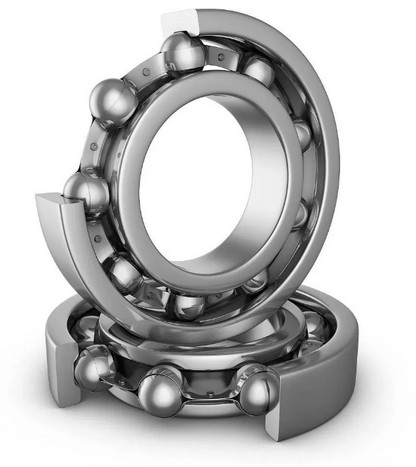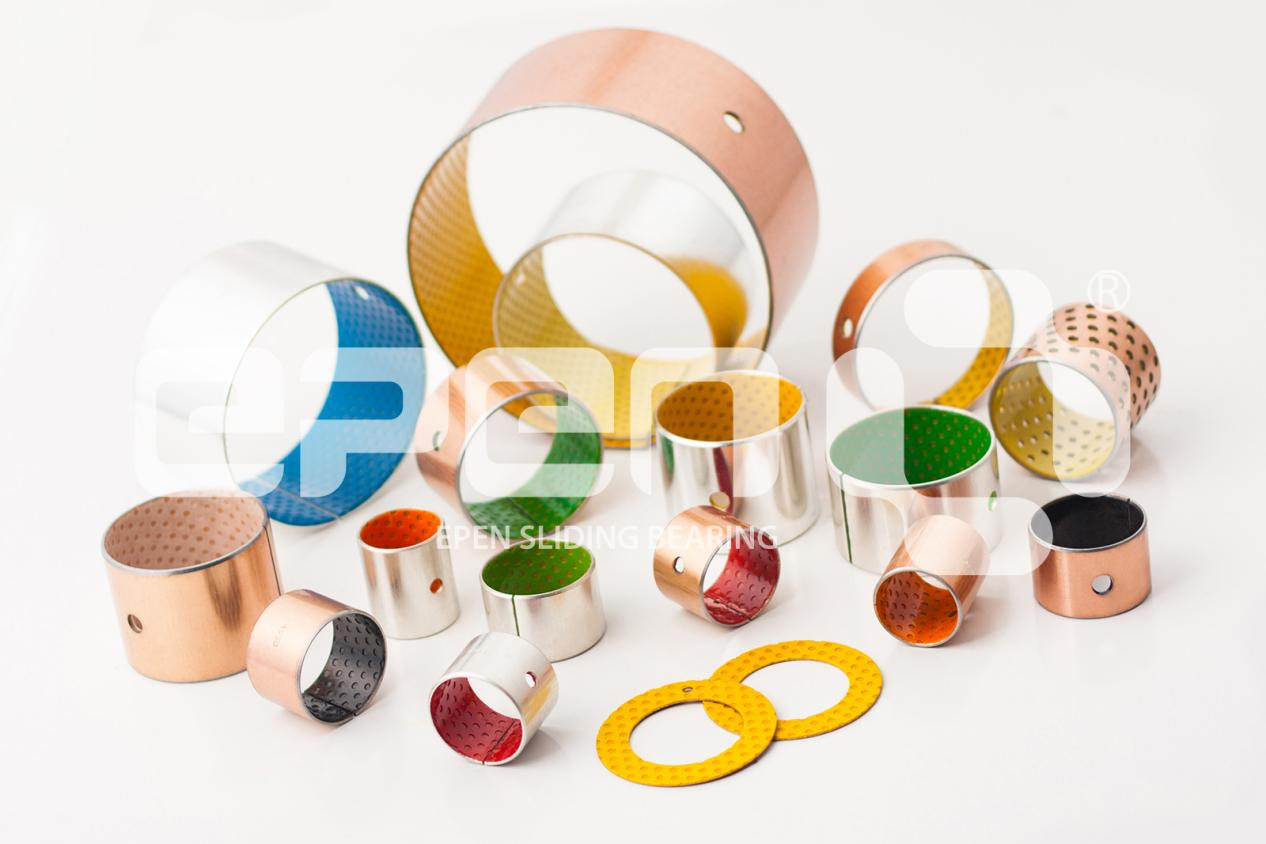Sliding bearing is a kind of bearing with sliding friction property, which is characterized by stable operation, low reliability and noise, and can withstand heavy load and large impact load. It can be divided into integral type, split type and tile type according to different structural forms.
(1) Assembly of integral sliding bearing
The integral sliding bearing, commonly known as shaft sleeve, is also the simplest form of sliding bearing. It is mainly assembled by pressing and hammering. In special cases, the hot assembling method is used. Most shaft sleeves are made of copper or cast iron. They should be carefully assembled. They can be assembled by using a wooden hammer or a hammer to hit wood blocks. When the interference dimension tolerance is large, they can be pressed in by a press. No matter knock in or press in, tilt must be prevented. After assembly, the oil groove and oil hole should be in the required position.
The bearing deformed after assembly shall be trimmed with inner hole. The smaller size can be cut with reamer, and the larger size can be scraped. At the same time, pay attention to control the fit clearance with the shaft within the tolerance range. In order to prevent the shaft sleeve from rotating when working, the contact surface between the shaft sleeve and the box is equipped with locating pins or slotted screws. Because the hardness of the case and shaft sleeve materials is different when drilling, it is easy to make the drill bit incline to the soft material side. The solution is: first, use the sample to punch the hole against the hard material side before drilling, and second, use the short drill bit to increase the rigidity of the drill bit during drilling.
(2) Assembly of split bearing
Split bearing, also known as split bearing, has the characteristics of simple structure and convenient adjustment and disassembly. Two bearing shells are inserted on the bearing shells, and a gasket is used at the joint to adjust the reasonable clearance.
① Assembly of bearing shell and bearing body
The contact between the upper and lower bearing shells and the bearing body hole must be good. If it does not meet the requirements, take the bearing body hole of the thick-walled bearing shell as the benchmark, scrape the back of the bearing shell, and make the steps at both ends of the bearing shell close to both ends of the bearing body. As long as the split surface of the thin wall bearing bush is about 0.1mm higher than the split surface of the bearing body, it is not necessary to scratch.
② The bearing shell is installed in the bearing body
No displacement is allowed in radial or axial direction. Usually, the steps at both ends of the bearing pad are used to stop the positioning or positioning pin positioning.
③ Scraping of bearing bush
Generally, the split bearing bush uses its matching bearing lapping point. Generally, the lower bearing bush is scraped first, and then the upper bearing bush is scraped. In order to improve efficiency, the bearing bush and cover can not be installed when scraping the lower bearing bush. When the contact point of the lower bearing bush basically meets the requirements, the upper bearing bush and the upper cover can be pressed tightly, and when scraping the upper bearing bush, the contact point of the lower bearing bush can be further corrected. The tightness of the shaft during scraping can be adjusted by changing the thickness of the gasket with the increase of scraping times. When the bearing cover is fastened, the shaft can rotate easily without obvious clearance, and the contact point meets the requirements, and the scraping is completed.
④ Measurement of bearing clearance
The size of the bearing clearance can be adjusted by the shims at the split plane, or can be obtained by directly scraping the bearing bush. The lead pressing method is usually used to measure the bearing clearance. Take several pieces of lead wire with a diameter greater than the bearing clearance and place them on the journal and the split, then tighten the nut to make the split tight, then unscrew the nut, take down the bearing cover, carefully take out the flattened lead wire, and measure the thickness of each piece with a micrometer. The bearing clearance can be known according to the average thickness of the lead wire. Generally, the clearance of bearing shall be 1.5 ‰ - 2.5 ‰ (mm) of shaft diameter, and the smaller clearance value shall be taken when the diameter is large. If the shaft diameter is 60mm, the bearing clearance should be between 0.09-0.15mm.
Assembly of rolling bearing
Rolling bearing has the advantages of small friction, small axial size, convenient replacement and simple maintenance.
(1) Technical requirements for assembly
① The end face of the rolling bearing marked with the code shall be installed in the visible direction so that it can be checked during replacement.
② The arc radius at the step of the journal or shell hole shall be smaller than the arc radius at the corresponding position on the bearing.
③ After the bearing is assembled on the shaft and in the housing hole, there should be no skew.
④ One of the two coaxial bearings must move with the shaft when it expands.
⑤ When assembling rolling bearing, dirt must be strictly prevented from entering the bearing.
⑥ The assembled bearing must operate flexibly, with low noise, and the working temperature should not exceed 65 ℃.
(2) Assembly method
When assembling the bearing, the most basic requirement is to make the added axial force directly act on the end face of the ring of the installed bearing (when installed on the shaft, make the added axial force directly act on the inner ring, and when installed on the hole, make the added force directly act on the outer ring). Try not to affect the rolling body. The assembly methods include hammering method, press assembly method, hot assembly method, frozen assembly method, etc.
① Hammering method
Use a hammer to pad a copper rod and some soft materials before hammering. Pay attention not to let copper dust and other foreign matters fall into the bearing raceway, and do not directly hit the inner and outer rings of the bearing with a hammer or punch, so as not to affect the fitting accuracy of the bearing or cause damage to the bearing.
② Screw press or hydraulic press assembly method
For bearings with large interference tolerance, screw press or hydraulic press can be used for assembly. Before pressing, the shaft and bearing should be leveled and coated with a little lubricating oil. The pressing speed should not be too fast. After the bearing is in place, the pressure should be removed quickly to prevent damage to the bearing or shaft.
③ Hot charging method
The hot loading method is to put the bearing in oil and heat it to 80 ℃ - 100 ℃ to make the inner hole of the bearing swell and then cover it on the shaft, which can prevent the shaft and bearing from being damaged. For bearings with dust covers and sealing rings, the hot installation method is not applicable for bearings that have been filled with grease inside.
(3) The clearance of tapered roller bearing is adjusted after assembly. The main methods are shim adjustment, screw adjustment, nut adjustment, etc.
(4) When assembling the thrust ball bearing, the tight ring and the loose ring should be distinguished first. The inner diameter of the tight ring is slightly smaller. The assembled tight ring and the shaft are relatively static when working. It always rests on the step or hole end face of the shaft, otherwise the bearing will lose its rolling effect and accelerate wear.
More about EPEN Multi-layer Sliding Bearings:
Jiashan Epen Bearing Co., Ltd. is a professional manufacturer of sliding bearings, metal plastic composite bearings business, specializing in adhering to do fine, the better for our customers continue to create value concept, is committed Sliding Bearings, new composite materials research, development, promotion and applications. Company's existing main products for metal-plastic composite series Sliding Bearings, bimetal bearings, sliding bearings single metal series, are widely used in automotive, metallurgy, engineering machinery, construction machinery, plastics machinery, machine tool industry, water conservancy and hydropower 30 a number of areas.
Epen Multi-layer Sliding Bearings include EU Bushing, EX Bushing, EU PTFE lined Steel base Bearing, EU PTFE lined Stainless Steel base Bearing, EUB PTFE lined Copper base Bearing, EX POM lined Steel base Bearing, EV PVDF lined Steel base Bearing, EV PVDF lined Copper base Bearing, EK PEEK lined Steel base Bearing, EXB POM lined Copper base Bearing.
For example, EU tri-layer maintanence-free bushing have a base of lower carbon steel, onto which a porous bronze layer is sintered. PTFE mixtures are impregnated into the intersice of this bronze layer after rolling process completed. Eu has good physical & mechanical properties, also has certainly chemical properties. It is suitable for rotary, oscillating movement with performance of self-lub. Anti-wear, lower firction, lower noise.





